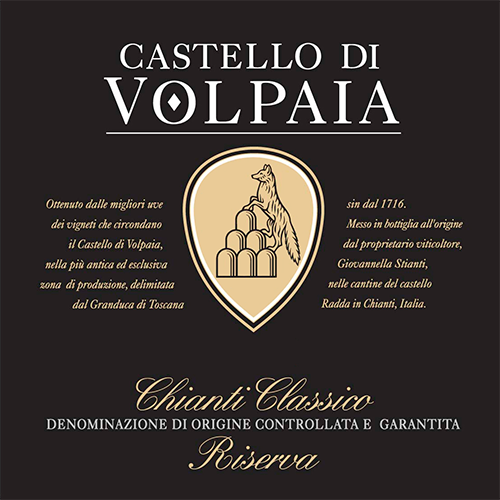
Castello di Volpaia
Chianti Classico Riserva DOCG
Iconic wine from Castello di Volpaia made exclusively from Sangiovese grapes. Representing the rebirth of Chianti Classico as a fine wine region, it was the first ever Chianti that made it to the top 3 of “Wine Spectator Top 100 Wines of the Year” with the 2015 vintage.
At 2,000 feet, this is one of the highest-elevation wineries in the Chianti region. The vineyards are located in Casavecchia, Casetto, Castellino, Campo a Prato, Pratolino, Santa Caterina, Santa Maria Novella, Vignavecchia.
- Region
- Tuscany
- Appellation
- Chianti Classico DOCG Riserva
- Varietal Composition
- Sangiovese
- Aging
- 24 months in a combination of Slovenian and French oak casks, then a minimum of 3 months in bottle.
- Alcohol
- 13.78%
A pure expression of the best Sangiovese in the Volpaia estates, the Chianti Classico Riserva has a ruby-red hue with a trace of garnet. The nose is elegant, displaying hints of spice and fruit.
Jancis Robinson
17 Points
2020
“Medium ruby. Joyful, classic ripe red-cherry and baked-earth nose – sweet and savoury. Mouth-watering acidity and firm gum-climbing tannin. Lovely expressive fruit. Perhaps not the most concentrated example but really beautifully balanced.”
— Samantha Cole-Johnson, 2024




